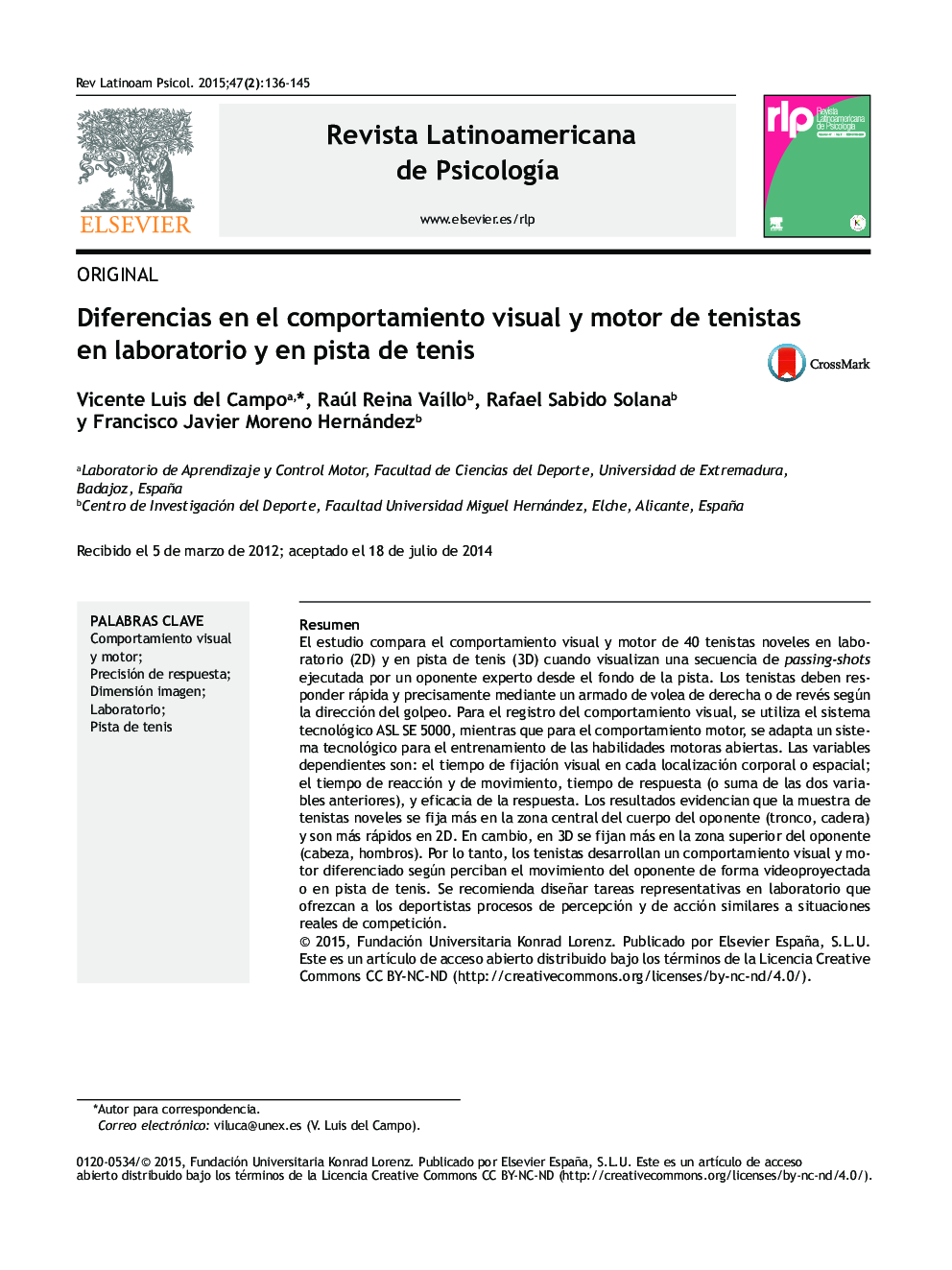| کد مقاله | کد نشریه | سال انتشار | مقاله انگلیسی | نسخه تمام متن |
|---|---|---|---|---|
| 895278 | 914626 | 2015 | 10 صفحه PDF | دانلود رایگان |
ResumenEl estudio compara el comportamiento visual y motor de 40 tenistas noveles en laboratorio (2D) y en pista de tenis (3D) cuando visualizan una secuencia de passing-shots ejecutada por un oponente experto desde el fondo de la pista. Los tenistas deben responder rápida y precisamente mediante un armado de volea de derecha o de revés según la dirección del golpeo. Para el registro del comportamiento visual, se utiliza el sistema tecnológico ASL SE 5000, mientras que para el comportamiento motor, se adapta un sistema tecnológico para el entrenamiento de las habilidades motoras abiertas. Las variables dependientes son: el tiempo de fijación visual en cada localización corporal o espacial; el tiempo de reacción y de movimiento, tiempo de respuesta (o suma de las dos variables anteriores), y eficacia de la respuesta. Los resultados evidencian que la muestra de tenistas noveles se fija más en la zona central del cuerpo del oponente (tronco, cadera) y son más rápidos en 2D. En cambio, en 3D se fijan más en la zona superior del oponente (cabeza, hombros). Por lo tanto, los tenistas desarrollan un comportamiento visual y motor diferenciado según perciban el movimiento del oponente de forma videoproyectada o en pista de tenis. Se recomienda diseñar tareas representativas en laboratorio que ofrezcan a los deportistas procesos de percepción y de acción similares a situaciones reales de competición.
This study addresses the visual and motor behavior, and success rate, of 40 novice tennis players in a laboratory setting and an on-court situation when viewing a passing-shots rally performed by an expert tennis player located at the back line of the court. The tennis players had to move fast and quickly through forehand or backhand volleys. Visual search strategies were recorded with an ASL SE5000 eye tracking system, and a computerized system was used to analyze the time parameters of the motor response. The dependent variables are the time of visual fixation on the corporal or spatial locations, reaction and movement times, response time (or the sum of the two variables), and success rate of the responses. The results show that the sample of novice players were faster in 2D and fixed more time on the central area of the opponent body (e.g., trunk, hip). Thus, novice players fixed more on the upper body of the opponent (e.g., head, shoulders) in 3D. Therefore, tennis players develop a differentiated visual and motor behavior according to the way they perceive the opponent's movement, whether in a video projection or on the tennis court. It is recommended to carry out representative tasks in the laboratory to provide perceptive and motor processes similar to real situations.
Journal: Revista Latinoamericana de Psicología - Volume 47, Issue 2, May–August 2015, Pages 136–145
